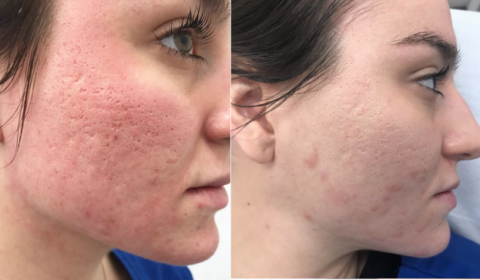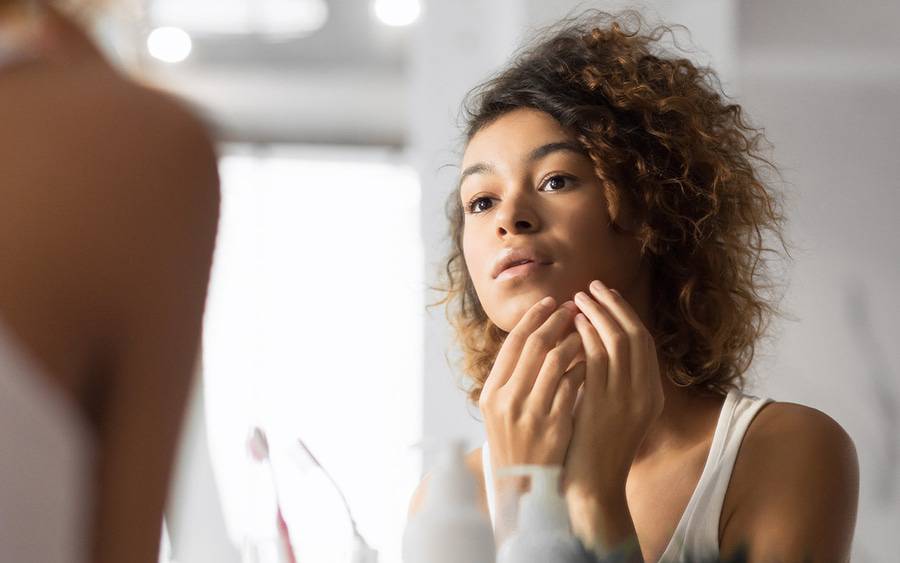Best Acne Scars Treatment: Advanced Techniques for Smoother Skin
Best Acne Scars Treatment: Advanced Techniques for Smoother Skin
Blog Article
Recognizing the Various Skin Problems and Effective Therapy Choices for Acne Scars
Acne marks stand for a complex interplay of skin problems that dramatically influence individuals' self-confidence and total skin health and wellness. As we explore the landscape of acne mark management, it becomes obvious that the journey towards clearer skin might involve more than simply topical remedies.
Types of Acne Marks

On the other hand, hypertrophic scars result from an overproduction of collagen throughout the healing procedure, causing elevated areas on the skin. These scars are usually firm and can differ in shade, in some cases appearing red or darker than the bordering skin.
Comprehending these sorts of acne scars is critical for creating an effective treatment strategy - acne and acne scars treatment. Alternatives may include chemical peels, laser therapy, microneedling, or facial fillers, customized to the particular scar type. A complete examination with a skin specialist can help identify one of the most suitable treatment, thinking about the person's skin kind, scar seriousness, and total skin wellness
Sources Of Acne Scarring
Marking occurs as a result of the body's natural healing feedback to swelling and injury caused by acne lesions. When acne types, it activates an inflammatory reaction, bring about the release of different cytokines and growth elements that promote healing. This process can often lead to too much tissue development or inadequate repair, resulting in marks.
The key reasons for acne scarring include the intensity of the acne itself, period of the lesions, and specific skin kinds. Extreme inflammatory acne, such as cysts and blemishes, is more probable to lead to scarring as a result of much deeper cells damage. In addition, improper handling of acne sores, such as choosing or pressing, can exacerbate tissue injury and inflammation, boosting the chance of scarring.
Hereditary tendency also plays a significant role; individuals with a family background of scarring are at a greater risk. Skin type and shade can affect mark development, as darker skin tones might experience post-inflammatory hyperpigmentation, while lighter skin may create atrophic scars.
Eventually, comprehending these causes is necessary in taking care of acne and mitigating the capacity for scarring.

Treatment Choices for Scarring
Reliable treatment choices for acne scarring differ depending on the kind and intensity of the scars. Normally categorized right into atrophic, hypertrophic, and keloid scars, these problems require customized methods for optimal outcomes.
For atrophic marks, which are characterized by a loss of tissue, treatments such as chemical peels, microdermabrasion, and laser therapy are generally utilized. These approaches advertise skin renewal and promote collagen production, therefore enhancing skin texture. Subcision, a minimally intrusive treatment, can likewise be efficient by separating fibrous bands under the skin.
Keloid and hypertrophic scars can be much more challenging to deal with. Alternatives consist of corticosteroid injections to minimize swelling and squash the marks. In many cases, cryotherapy or laser therapy may be advised to decrease their appearance.
Surgical options are available for severe scarring, where excision or skin grafting may be essential. It's essential for individuals to talk to a skin specialist to examine their details scar kind and talk about one of the most suitable treatment strategy. Integrating multiple therapies commonly generates the best results, making sure that each person's distinct skin disease is addressed properly.
Natural Remedy and Natural Solutions
All-natural services and natural home remedy can supply an available technique for individuals looking for to boost the look of acne marks (acne and acne scars treatment). Different ingredients located in the home kitchen have demonstrated potential check these guys out benefits in enhancing skin structure and advertising healing

An additional effective option is lemon juice, which works as a natural exfoliant and can lighten hyperpigmentation. Nevertheless, it should be used meticulously, as it may cause photosensitivity. Oat meal masks are additionally valuable; their gentle peeling can help eliminate dead skin cells while soothing irritation.
Vital oils, such as tea tree oil and lavender oil, can even more support scar healing due to their antimicrobial homes. It is important to execute a spot examination prior to using any treatment to make sure there are no unfavorable reactions. These natural options can be a complementary approach in the trip to lessen acne scars.
Protecting Against Future Scarring
Embracing a proactive method to skin care can considerably decrease the danger of developing future acne marks. Regular cleaning, peeling, and hydration can aid preserve skin health and wellness and avoid blocked pores.
In addition, preventing the temptation to press or choose acne lesions is essential, as this can bring about inflammation and subsequent scarring. Rather, people ought to concentrate on using topical treatments that advertise recovery and minimize inflammation. Components such as salicylic acid, benzoyl peroxide, and retinoids are known for their efficiency in taking care of acne and reducing marks.
Sun security is another essential part; direct exposure to UV rays can dim marks and impede healing. For that his explanation reason, using a next broad-spectrum sun block daily can minimize these effects - acne scars treatment.
Finally, maintaining a healthy and balanced diet rich in anti-oxidants and remaining moisturized assistances skin regrowth. By applying these safety nets, individuals can considerably reduce their threat of future scarring and promote total skin wellness.
Conclusion
In final thought, a comprehensive understanding of acne scars, encompassing both atrophic and hypertrophic kinds, is necessary for effective treatment approaches. Tailored treatments, consisting of professional therapies and natural home remedy, can considerably improve skin look and structure. Safety nets also play an essential role in decreasing future scarring. Assessment with a dermatologist stays necessary to develop individualized strategies that think about individual skin types and scar seriousness, inevitably boosting the efficiency of scar administration methods.
Acne scars stand for a complicated interplay of skin conditions that dramatically impact people' self-esteem and overall skin health and wellness. The two key classifications of acne scars are atrophic and hypertrophic marks. These marks are further classified into 3 subtypes: ice choice scars, which are slim and deep; boxcar marks, which are wider and have distinct sides; and rolling marks, which develop a wave-like appearance due to unequal skin appearance.
A complete consultation with a skin specialist can aid establish the most proper intervention, taking right into account the person's skin type, scar severity, and overall skin health.
Consultation with a skin doctor continues to be crucial to create individualized methods that consider specific skin types and scar extent, ultimately enhancing the effectiveness of scar management strategies.
Report this page